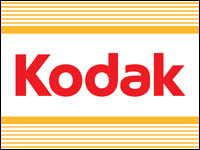According to a new report from Forrester Research, exceptional customer service strongly increases future sales through repeat visits and positive word-of-mouth.
The study of 17,000 online consumers shows that 90 percent of satisfied customers are likely to visit again, and that 87 percent will tell friends and family about the site.
The report also indicates that online shoppers expect Web sites to have customer service readily available throughout the buying experience. In 1999, 37 percent of online buyers used customer service on the Internet, a full 4.8 million users. More than 40 percent of online buyers have stopped shopping at a particular site because of unhappiness with the service received.
What’s Preferred?
71 percent of users who needed customer service first turned to e-mail, and 51 percent picked up the phone. E-mail and the telephone were the most-used and the most-preferred form of contact.
If only one channel were available, 46 percent of respondents would choose e-mail and 41 percent would opt for the phone.
In seeking help, 19 percent searched for information on the site, while 11 percent plowed through the FAQ section. Fewer than five percent of visitors preferred site searching and FAQs to other forms of customer service.
Other forms of service such as U.S. mail, fax, and chats fell into the low single digits of use and preference.
Four Customer Service Needs
Most retailers view customer service as a problem-solving action after the sale. In e-tailing, however, customer service begins the moment a customer enters the Web site. The report identified four basic times of service need:
During shopping, 19 percent of customers used service to find products and inquire about product attributes.
During the buying process, 21 percent had questions about billing issues, receipts, and the check-out process itself.
Once the order was placed, 58 percent of users checked in on the status of an order in processing and its status in shipping.
Once the item was received, 19 percent of buyers had questions about returns.
Reactive And Proactive
The study also emphasized that solid customer service should solve problems while anticipating difficulties before they arise. Quick response was the most-preferred quality of reactive service, followed by easy returns and quick order tracking.
Among proactive service qualities preferred by online customers, delivery and shipping options were most important. These issues were followed by an interest in detailed product information and smart product recommendations.
Advertising Customer Service
The report goes on to suggest that companies that excel at customer service should publicize it openly.
Suggestions include advertising the site’s call center, low wait times, and knowledgeable service representatives. The report also advocates that sites include personalized recommendations, product reviews, free gift wrapping, and handwritten gift cards in their advertising efforts.











































Social Media
See all Social Media